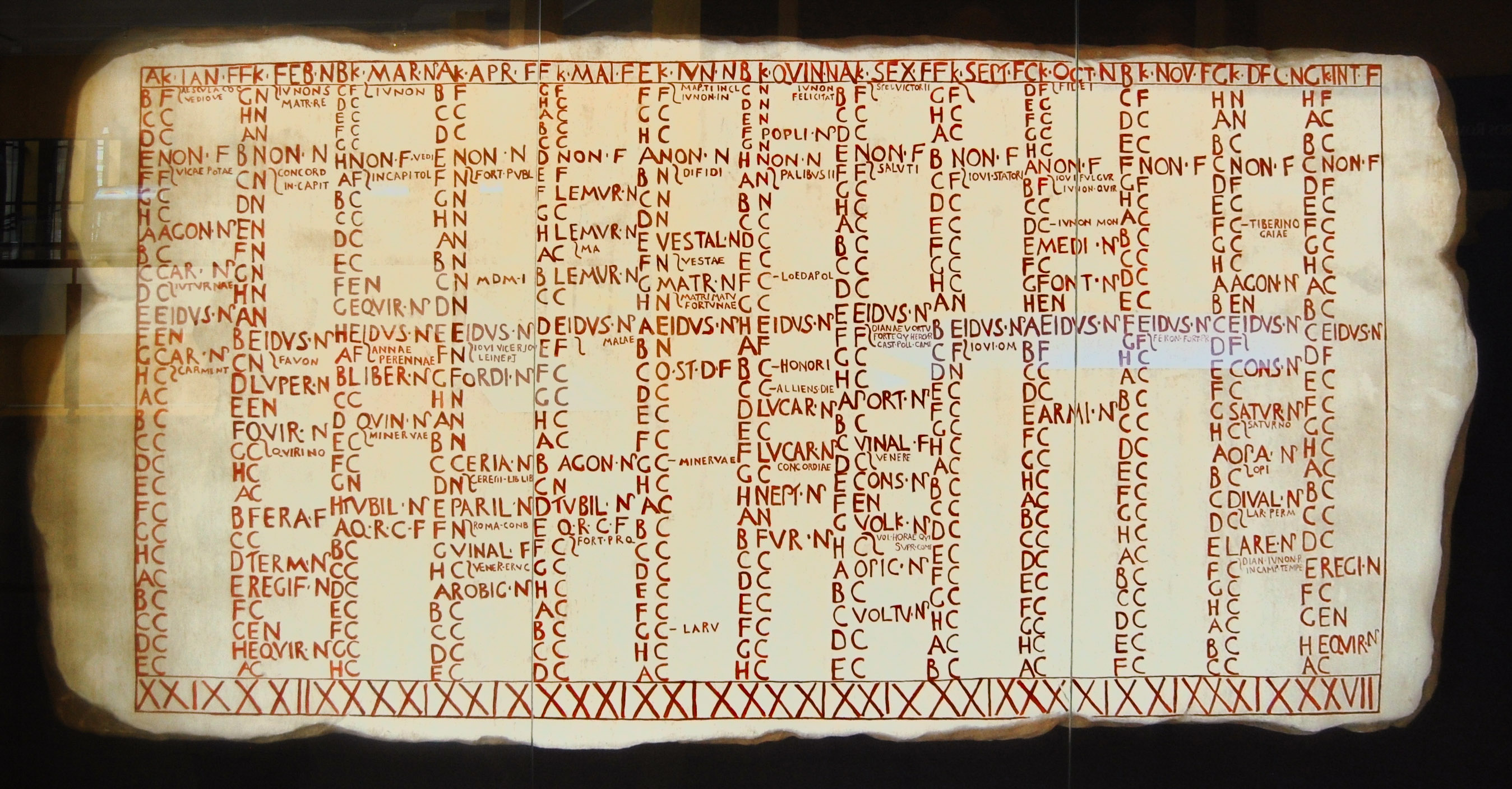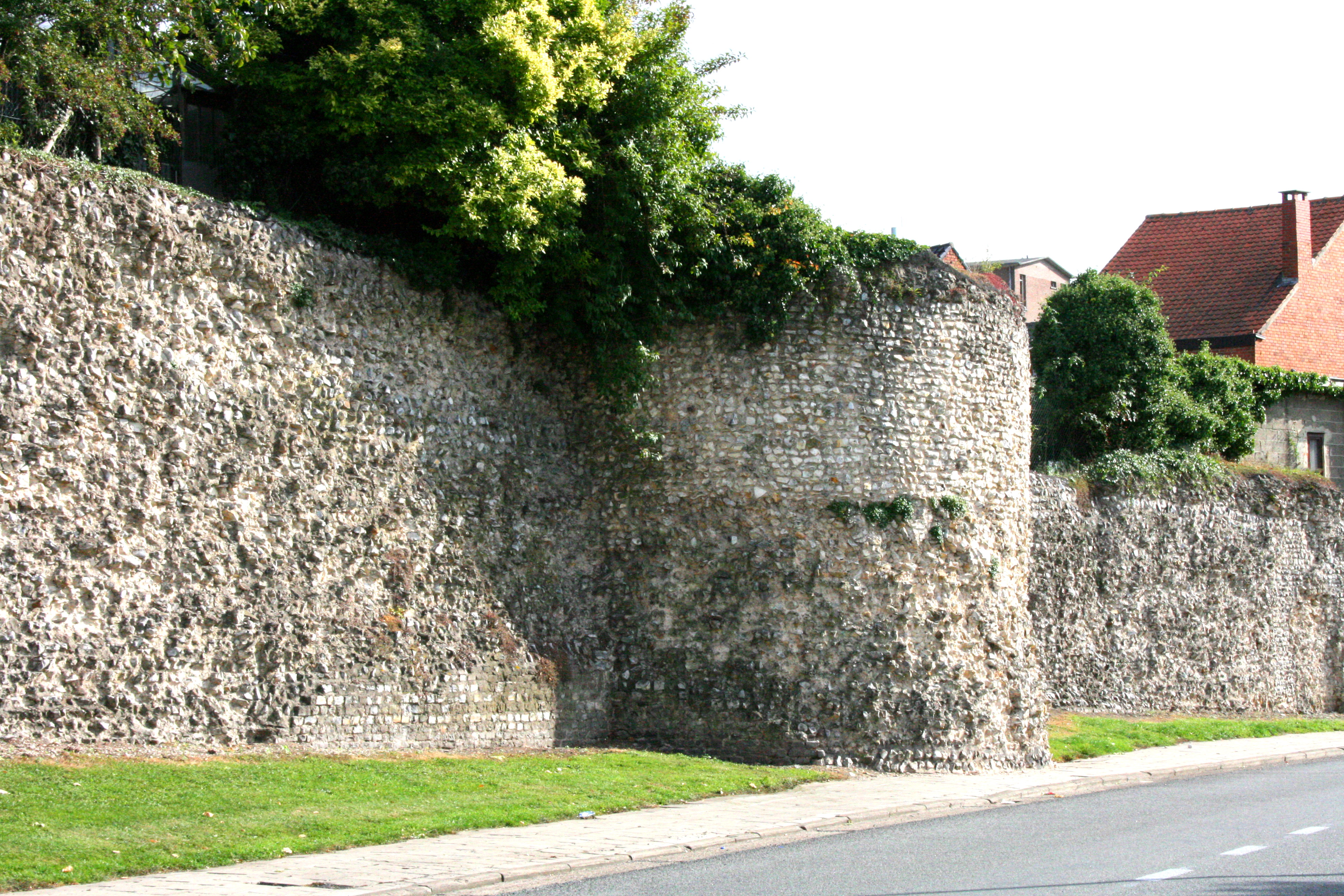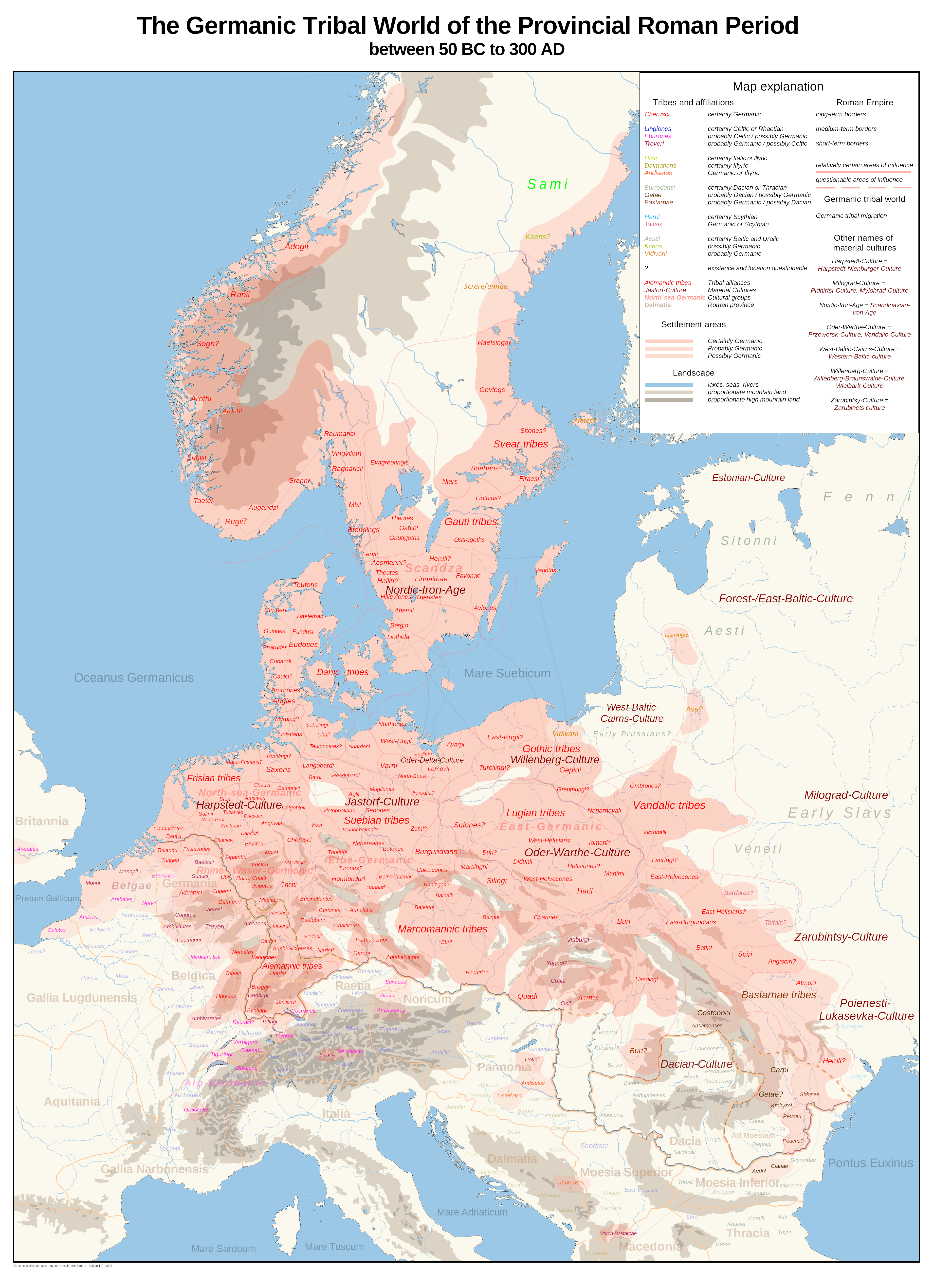|
57 BC
__NOTOC__ Year 57 BC was a year of the pre-Julian Roman calendar. Contemporaneously, in the Roman Republic, it was known as the Year of the Consulship of Lentulus and Metellus (or, less frequently, year 697 ''Ab urbe condita''). The denomination 57 BC for this year has been used since the early medieval period, when the Anno Domini calendar era became the prevalent method in Europe for naming years. Events By place Roman Republic * Consuls: Publius Cornelius Lentulus Spinther and Quintus Caecilius Metellus Nepos. * Second year of Julius Caesar's Gallic Wars: ** Spring – Julius Caesar raises a further two legions ( Legio XIII and Legio XIV), bringing his army in Gaul to eight legions (at which strength it remains until 54 BC). ** Caesar sends Servius Sulpicius Galba with Legio XII into the territory of the Nantuates, Seduni and the Veragri. He occupies Octodurus (modern-day Martigny) in Switzerland. ** Caesar defeats a Belgic army near Bibrax (modern-da ... [...More Info...] [...Related Items...] OR: [Wikipedia] [Google] [Baidu] |
Roman Calendar
The Roman calendar was the calendar used by the Roman Kingdom and Roman Republic. Although the term is primarily used for Rome's pre-Julian calendars, it is often used inclusively of the Julian calendar established by Julius Caesar in 46 BC. According to most Roman accounts, #Romulus, their original calendar was established by their Roman legend, legendary list of kings of Rome, first king Romulus. It consisted of ten months, beginning in spring with March and leaving winter as an unassigned span of days before the next year. These months each had 30 or 31 days and ran for 38 nundinal cycles, each forming a kind of eight-day weeknine days inclusive counting, counted inclusively in the Roman mannerand ending with religious rituals and a Roman commerce, public market. This fixed calendar bore traces of its origin as an observational calendar, observational lunar calendar, lunar one. In particular, the most important days of each monthits kalends, nones (calendar), nones, a ... [...More Info...] [...Related Items...] OR: [Wikipedia] [Google] [Baidu] |
Veragri
The Veragrī (Gaulish: *''Ueragroi'', 'super-warriors'; Greek: ) were a Gallic tribe dwelling around present-day Martigny, in the Pennine Alps, during the Iron Age and the Roman period. Along with the Nantuates, Seduni and Uberi, they were part of the Vallenses, a group of tribes living between Lake Geneva and the Pennine Alps, in the modern Canton of Valais (Switzerland). Name They are mentioned as ''Veragros'' by Caesar (mid-1st c. BC), ''uer agri'' by Livy (late 1st c. BC), ''Ou̓áragroi'' (Οὐάραγροι) by Strabo (early 1st c. AD), ''Varagri'' by Pliny (1st c. AD), Pliny. ''Naturalis Historia''3:20 ''Ouarágrous'' (Οὐαράγρους) by Cassius Dio (3rd c. AD), and as ''Veragros'' (var. ''beragros'', ''ueragres'') by Orosius (early 5th c. AD)., s.v. ''Veragri'' and ''Octodurus''. The ethnonym ''Veragrī'' is a Latinized form of Gaulish ''Ueragroi'' (sing. ''Ueragros''). It has been translated as 'super-warriors'. It stems from the Celtic root *''uer(o) ... [...More Info...] [...Related Items...] OR: [Wikipedia] [Google] [Baidu] |
Vikramaditya
Vikramaditya (Sanskrit: विक्रमादित्य IAST: ') was a legendary king as mentioned in ancient Indian literature, featuring in traditional stories including those in ''Baital Pachisi, Vetala Panchavimshati'' and ''Singhasan Battisi''. Many describe him as ruler with his capital at Ujjain (Pataliputra or Pratishthana in a few stories). "''Vikramaditya''" was also a common title adopted by several List of Indian monarchs, monarchs in ancient and medieval India, and the Vikramaditya legends may be embellished accounts of different kings (particularly Chandragupta II). According to popular tradition, Vikramaditya began the Vikram Samvat era in 57 BCE after defeating the Shakas, and those who believe that he is based on a historical figure place him around the first century BCE. However, this era is identified as "''Vikrama Samvat''" after the ninth century CE. Nepal uses Vikram Samvat, Bikram Sambat named after him, 57 years ahead of Gregorian calendar, as state ... [...More Info...] [...Related Items...] OR: [Wikipedia] [Google] [Baidu] |
Mithridates IV Of Parthia
Mithridates IV (also spelled Mithradates IV; ''Mihrdāt'') was a Parthian king from to 57 to 54 BC. He was the son and successor of Phraates III (). Mithridates IV's reign was marked by a dynastic struggle with his younger brother, Orodes II, who eventually emerged victorious and had Mithridates IV executed, thus succeeding him. Etymology ''Mithridates'' is the Greek attestation of the Iranian name ''Mihrdāt'', meaning "given by Mithra", the name of the ancient Iranian sun god. The name itself is derived from Old Iranian ''Miθra-dāta-''. Biography Mithridates IV was a son of Phraates III (), under whom he served as the ruler of the central province of Media. In 57 BC, Mithridates murdered his father with the assistance of his younger brother Orodes. However, the two brothers quickly fell out, and Orodes revolted with the support of the Suren clan.; ; They both assumed the title of King of Kings to demonstrate their claims of superiority over each other. This changed t ... [...More Info...] [...Related Items...] OR: [Wikipedia] [Google] [Baidu] |
Tongeren
Tongeren (; ; ; ) is a city and former municipality located in the Belgian province of Limburg, in the southeastern corner of the Flemish region of Belgium. Tongeren is the oldest town in Belgium, as the only Roman administrative capital within the country's borders. As a Roman city, it was inhabited by the Tungri, and known as ''Atuatuca Tungrorum'', it was the administrative centre of the ''Civitas Tungrorum'' district. Since 1 January 2025, it is part of the new municipality Tongeren-Borgloon History ''Atuatuca Tungrorum'' The Romans referred to Tongeren as ''Aduatuca Tungrorum'' or ''Atuatuca Tongrorum'', and it was the capital of the large Roman province of '' Civitas Tungrorum'', an area which covered modern Belgian Limburg, and at least parts of all the areas around it. Before the Roman conquests, this area was inhabited by the group of Belgic tribes known as the ''Germani cisrhenani''. (Despite being known as the ''Germani'', whether they spoke a Germanic languag ... [...More Info...] [...Related Items...] OR: [Wikipedia] [Google] [Baidu] |
Battle Of The Sabis
The Battle of the Sabis also (arguably erroneously) known as the Battle of the Sambre or the Battle against the Nervians (or Nervii) was fought in 57 BC near modern Saulzoir in Northern France, between Caesar's legions and an association of Belgae tribes, principally the Nervii. Julius Caesar, commanding the Roman forces, was surprised and nearly defeated. According to Caesar's report, a combination of determined defence, skilled generalship, and the timely arrival of reinforcements allowed the Romans to turn a strategic defeat into a tactical victory. Few primary sources describe the battle in detail, with most information coming from Caesar's own report on the battle from his book, ''Commentarii de Bello Gallico''. Little is therefore known about the Nervii perspective on the battle. Prelude During the winter of 58–57 BC rumours came to Caesar's ears that the Belgae tribes were forming a union because they feared possible Roman interference in their affairs. The union incl ... [...More Info...] [...Related Items...] OR: [Wikipedia] [Google] [Baidu] |
Suessiones
The Suessiones were a Belgic tribe, dwelling in the modern Aisne and Oise regions during the La Tène and Roman periods. During the Gallic Wars (58–50 BC), their oppidum Noviodunum ( Pommiers) was besieged and conquered by Caesar. Following their defeat by the Romans at the end of the campaign of 57 BC, they fell into dependence upon Rome and remained faithful to the Romans during the revolt of 51 BC. Name Attestations They are mentioned as ''Suessiones'' by Caesar (mid-1st c. BC) and Pliny (1st c. AD), as ''Souessíōnes'' (Σουεσσίωνες) and ''Ou̓essíōnas'' (Οὐεσσίωνας) by Strabo (early 1st c. AD), and as ''Ouéssones'' (Οὐέσσονες) by Ptolemy (2nd c. AD). Etymology The etymology of the Gaulish ethnonym ''Suessiones'' has been debated, but most scholars derive it from the word for 'six', (cf. Gaulish 'sixth', Irish , Welsh 'six'), after a Gallic custom of including numbers in tribal names (e.g. '' Vo-contii'', '' Vo-corii'', '' Tri- ... [...More Info...] [...Related Items...] OR: [Wikipedia] [Google] [Baidu] |
Belgae
The Belgae ( , ) were a large confederation of tribes living in northern Gaul, between the English Channel, the west bank of the Rhine, and the northern bank of the river Seine, from at least the third century BC. They were discussed in depth by Julius Caesar in his Commentarii de Bello Gallico, account of his wars in Gaul. Some peoples in southern Roman Britain, Britain were also called Belgae and had apparently moved from the continent. T. F. O'Rahilly believed that some had moved further west and he equated them with the Fir Bolg in Ireland. The Roman province of Gallia Belgica was named after the continental Belgae. The term continued to be used in the region until the present day and is reflected in the name of the modern country of Belgium. Etymology The consensus among linguists is that the ethnic name ''Belgae'' probably comes from the Proto-Celtic root ''*belg-'' or ''*bolg-'' meaning "to swell (particularly with anger/battle fury/etc.)", cognate with the Dutch language ... [...More Info...] [...Related Items...] OR: [Wikipedia] [Google] [Baidu] |
Battle Of The Axona
The Battle of the Axona was fought in 57 BC, between the Roman army of Gaius Julius Caesar and the Belgae. The Belgae, led by King Galba of the Suessiones, attacked, only to be repelled by Caesar. Fearing an ambush, the Romans delayed their pursuit. Caesar's ''Commentarii de Bello Gallico'' describes this battle at 2.7 - 2.11. Prelude In the winter of 58–57 BC, Caeser heard rumours that the Belgae tribes were uniting due to their fears of potential Roman involvement in their matters. The union included the Bellovaci, Suessiones, Nervii, Atrebates, Ambiani, Morini, Menapii, Caleti, Veliocasses, Viromandui, Aduatuci, Condrusi, Eburones, Caeroesi, and Paemani tribes, and was under the leadership of Galba, a king of the Suessiones. These reports provided Caesar with a good pretext for conquering more than Gaul "itself", and for this, he raised two legions in Cisalpine Gaul ( XIII and XIV) and convinced the Remi tribe to side with him. In response, the other Belgae ... [...More Info...] [...Related Items...] OR: [Wikipedia] [Google] [Baidu] |
Atuatuci
The Atuatuci (or Aduatuci) were a Gallic- Germanic tribe, dwelling in the eastern part of modern-day Belgium during the Iron Age. They fought the Roman armies of Julius Caesar during the Gallic Wars (58–50 BC). In the Battle of the Sabis (57 BC), the Atuatuci sent troops to assist their Belgic neighbours, the Nervii, Atrebates and Viromandui, but were too late to avoid an eventual Roman victory. After they withdrew to their oppidum (fortress), the Atuatuci were later defeated by the Romans during the siege of the Atuatuci (57 BC). According to Caesar, 4,000 of the Atuatici perished in the seizure of their stronghold, and 53,000 of them were reduced to slavery. Several years later in 54 BC the Atuatuci suffered further retribution when they were involved with their neighbours in a failed rebellion against the Romans. Following the devastation of the tribe, which left only a number of small groups, the Atuatuci disappeared from historical records and likely assimilated into ne ... [...More Info...] [...Related Items...] OR: [Wikipedia] [Google] [Baidu] |
Nervii
The Nervii or Nervians were one of the most powerful Belgae, Belgic tribes of northern Gaul at the time of its conquest by Rome. Their territory corresponds to the central part of modern Belgium, including Brussels, and stretched southwards to Cambrai in French Hainaut. During their first century BC Roman military campaign, Julius Caesar's contacts among the Remi stated that the Nervii were the most warlike of the Belgae. In times of war, they were known to trek long distances to take part in battles. Being one of the northerly Belgic tribes, with the Menapii to the west, and the Eburones to their east, they were considered by Caesar to be relatively uncorrupted by civilization. According to Tacitus they claimed List of early Germanic peoples, Germanic descent. According to Strabo they were of Germanic origin. Name They are mentioned as ''Nervii'' by Julius Caesar, Caesar (mid-1st c. BC) and Orosius (early fifth c. AD), ''Neroúioi'' (Νερούιοι) by Strabo (early first c. ... [...More Info...] [...Related Items...] OR: [Wikipedia] [Google] [Baidu] |
Remi
The Remi (Gaulish: ''Rēmi'', 'the first, the princes') were a Belgic tribe dwelling in the Aisne, Vesle and Suippe river valleys during the Iron Age and the Roman period. Their territory roughly corresponded the modern Marne and Ardennes and parts of the Aisne and Meuse departments. Name They are mentioned as ''Remi'' by Caesar (mid-1st c. BC) and Pliny (1st c. AD), ''Rhē̃moi'' (Ῥη̃μοι; var. Ῥημοὶ) by Strabo (early 1st c. AD) and Ptolemy (2nd c. AD), ''Remos'' by Tacitus (early 2nd c. AD), ''Rhēmō̃n'' (Ῥημω̃ν) and ''Rhēmoĩs'' (Ῥημοι̃ς) by Cassius Dio (3rd c. AD), and as ''Nemorum'' in the '' Notitia Dignitatum'' (5th c. AD). The Gaulish ethnonym ''Rēmi'' (sing. ''Rēmos'') literally means 'the first ones', that is to say 'the princes'. It stems from a Proto-Celtic form reconstructed as ''*reimos'' ('first, prince, chief'; cf. Old Irish ''rem''- 'in front of', Welsh ''rwyf'' 'prince, chief', Mid. Cornish ''ruif'' 'king'), itsel ... [...More Info...] [...Related Items...] OR: [Wikipedia] [Google] [Baidu] |







